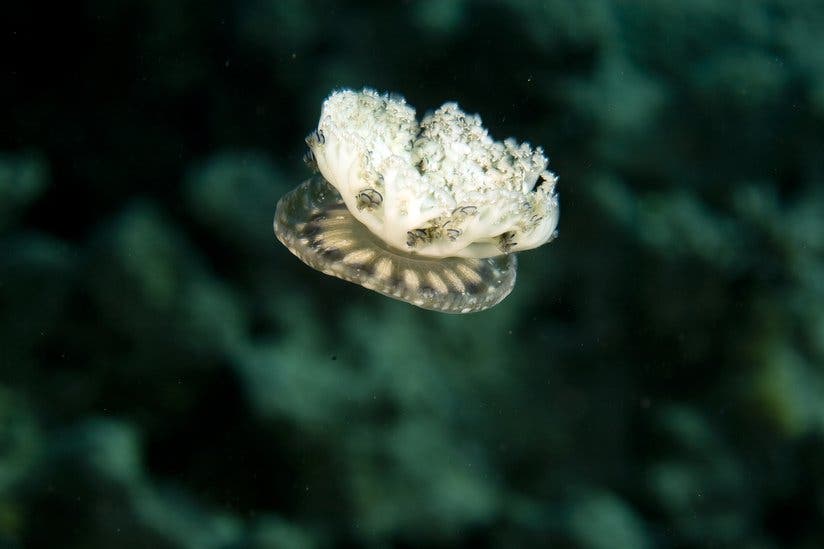If you ever went swimming in warm waters, you may have experienced a curious phenomenon: the calm and crystalline waters suddenly became a stinging substance uncomfortable to the touch. But when you look around, there’s nothing there.
Or so it seems to you.

Researchers were aware of this reported phenomenon and believed it to be part of a defensive strategy of anemones, sea lice or inverted jellyfish — all of them typical species of warm water. The latter of them recently caught the attention of a group of researchers in the US, whose results were published in Nature Communications Biology. According to their study, even the water surrounding upside-down jellyfish often stings to the touch.
The scientists thought that the mucus generated by inverted jellyfish, also known as Cassiopea xamachana, could be responsible for this curious itching. This type of jellyfish is commonly found in Florida, Hawaii and the Caribbean, usually stuck to the ocean floor. They took samples of the mucus and observed it under the microscope, noting that it contains a series of curious balls, spinning and moving to the sound of the gelatinous substance that envelops them.
A closer look showed that these spheres were composed of different cells, most of them very sharp.
“This discovery was both a surprise and a long-awaited resolution to the mystery of stinging water,” said Cheryl Ames, associate professor at Tohoku University. “We can now let swimmers know that stinging water is caused by upside-down jellyfish, despite their general reputation as a mild stinger.”
The team also observed a series of unusual cylindrical filaments, which are believed to help these balls travel more efficiently through the water.
They even noticed the presence of a specific type of algae, which normally live within jellyfish, establishing with them a symbiotic relationship, in which jellyfish provide protection and algae generate nutrients.
When studying some specimens of the jellyfish, the researchers realized that the balls found in the mucous were concentrated in the tentacles of the animal. They saw that the jellyfish tended to release the balls and pass them into the water through the mucus. This way they were defending against their enemies and capturing prey from which to feed. These structures, called cassiosomes, can kill prey and are the likely cause of ‘stinging water’ — the phantom stinging reported by many snorkelers and fishermen in tropical waters.

They reached this conclusion by checking that in contact with the spheres some small crustaceans, such as brine shrimp, died or were weak enough to be easily ingested by the jellyfish. All this is due to the presence of three toxins, which could be characterized by the researchers. It is true that symbiotic algae provide the jellyfish with some of the energy necessary for its survival, but this is not always enough.
“Venoms in jellyfish are poorly understood in general, and this research takes our knowledge one step closer to exploring how jellyfish use their venom in interesting and novel ways,” Anna Klompen, a graduate student at the University of Kansas who was part of the study, said.
Know that we know the reason for the stinging sensation, the next challenge for researchers will be to know how to avoid that from happening. The team is now looking at whether the jellies release the venom more at certain times of the day or in response to certain types of disturbances.
This discovery could also make an impact in biotechnology, researchers conclude.
The study has been published in Communications Biology.


